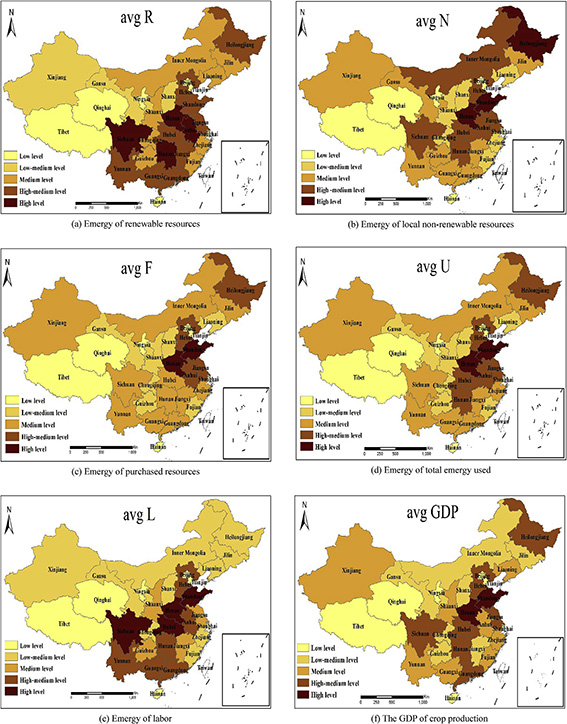【文章摘要】 China's demand for crop products is increasing, leading to a great deal of consumption of local resources and industrial inputs such as agricultural machineries, chemical fertilizers, pesticides and energies. Many environmental problems also occurred, such as water pollution, soil erosion and contamination, and CO2 emissions. Therefore, it is imperative to assess crop production's sustainability and identify the key driving forces of its rapid development so that the proper mitigation policies can be proposed. An emergy analysis method was employed due to its advantage of linking economic development with natural ecosystem service. Emergy sustainability index was chosen as the key indicator to measure crop production performances in 31 Chinese provinces for the period 2006e2015. The results demonstrate that the EYRs in 31 Chinese provinces are entirely keeping around 1 and the maximum and minimum values of ELR are respectively 1.71 in Guizhou and 8.29 in Tibet. Under this circumstance, the mean ESI values in 30 Chinese provinces are all less than 1, except Guizhou. This indicates that most Chinese provinces willhave to improve their crop production toward sustainable agricultural development. Then, a logarithmic Mean Divisia Index (LMDI) decomposition method was applied to identify the key driving forces that affect the evolution of ESI. The change of ESI (DESI) was decomposed into five factors: Scale and intensity factor (I), which depends on emergy density; Non-renewable resources factor (T), which depends on the density of non-renewable resources emergy; Productivity of labor factor (P), which depends on the productivity of labor; Renewable resources factor (E), which depends on intensity of renewable resources and number of Labor (G), which depends on labor inputs. The decomposition analysis results indicate that labor and renewable resources are the major factors affecting China's sustainable crop production, while other factors also have certain impacts. Such findings can provide valuable policy insights so that more appropriate crop production policies can be prepared by considering the local realities.
【文章说明】Liu, Z.X.; Wang, Y.; Geng, Y@; Li, R.D.; Dong, H.; Xue, B.; Yang, T.; Wang, S. Toward sustainable crop production in China: An emergy-based evaluation [J], Journal of Cleaner Production, 2019, 206: 11-26.


